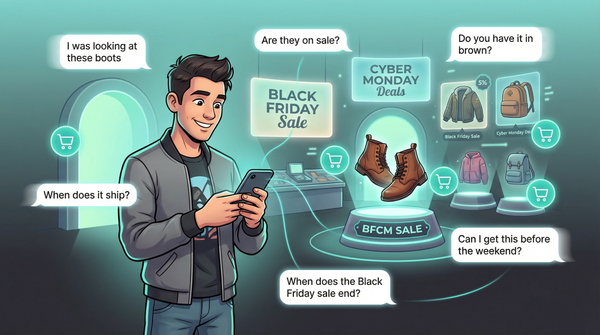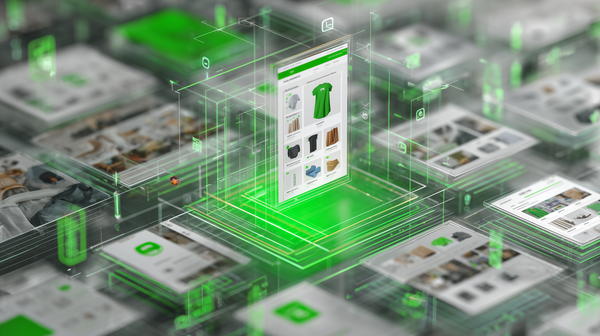How Shopify DTC Brands Are Winning the Early Back-to-School Surge

Back-to-school shopping isn’t waiting for the bell. In 2025, families are hitting “buy” weeks ahead of schedule—67% had started by early July, smashing every record and forcing DTC operators to rethink what “peak season” really means (NRF).

With tariff headlines and price hikes in the air, value-driven parents are playing chess while many brands are still setting up the board. Operators who adapted with July launches, omnichannel strategy, and sharper value props are winning this year’s BTS game—and the lessons will echo into Q4.
Why July Became the Back-to-School Battleground
The shift isn’t subtle. Last year, 55% of families had started BTS shopping by July. This year? Sixty-seven percent. The anxiety is real: 51% of parents say they’re moving early because they expect prices to jump, especially on imported goods (NRF; MMR).
Retailers saw it coming and front-loaded deals, making Prime Day the unofficial starting line. Amazon stretched Prime Day to four days, driving $24.1B in online spend—matching Black Friday/Cyber Monday combined (Digital Commerce 360). Nearly half of BTS shoppers began their hunt during that window (LinkedIn, Westerweel). For DTC brands, the old “August launch” just won’t cut it.
“If you’re in eCommerce, July is no longer the quiet mid-year dip. It’s a battleground… the clearest sign yet of where Q3 is heading.”
—Michael Westerweel, ChannelMojo (LinkedIn)

Value-Obsessed, Channel-Agnostic
Parents aren’t just buying early—they’re buying smarter, with value as the North Star. Forty-seven percent are holding off for the best deals; another quarter are spreading out spend (NRF). Price freezes, bundle deals, and loyalty rewards are what win wallets—not just markdowns.
Online is the default (55% of BTS shoppers), but omnichannel is the expectation. Families toggle from Amazon to Walmart to Shopify-powered DTCs, chasing the best offers and mobile-first checkout (NRF). Department and dollar stores still pull weight for bargain basics. Buy Online, Pick Up In Store (BOPIS) is a lifesaver for deal chasers who want certainty and speed.
“Social and AI drive spend. If your brand isn’t investing in shoppable content and discovery tools, you’re already behind.”
—Brian Tu, DTC strategist (LinkedIn)

The Data: Record Spend, Tighter Budgets
This is the paradox of BTS 2025: total spend will hit $39.4B—a record—even as average per-family spend drops to $858 (NRF). Apparel and tech are non-negotiables (tech alone: $13.6B nationwide). Parents are saying no to accessories, yes to the basics. For Shopify DTC brands, if you’re not selling essentials or packaging them as such, you’re fighting for scraps.
The “haves” are driving up college spend (average $1,326 per student), but lower-income shoppers are pulling back, choosing utility over style (SGB). Merchants see it: higher AOVs on must-haves, softer demand for anything that feels optional.
BTS Tactics That Actually Move the Needle
- Bundling: Not just a promo—parents perceive more value per dollar.
- Loyalty programs & member deals: Outperform sitewide sales for driving repeat.
- Buy Now, Pay Later: $1.9B in Prime Week spend, and rising (Digital Commerce 360).
- Price assurance: Target, Sam’s Club, and even DTCs are locking or matching prices to build urgency and trust (Modern Retail).
It’s not about racing to the bottom—it’s about selling ROI and trust. The smartest DTCs use the July rush to test offers, spot winning products early, and plan their Q3/Q4 pushes accordingly.
July Is the New August (and Probably the New October)
Here’s the real takeaway for DTC operators: the calendar has changed, and your playbook needs to change with it. Waiting until August is a missed opportunity. Treat July as a live lab for demand, creative, and inventory. Operators who lean in early are primed to repeat that success as holiday creep sets in for Q4. The consumer’s new mantra? “Buy early, buy smart.” The operator’s: “Launch early, learn fast.”
“July isn’t a lull anymore—it’s a launchpad for Q3 momentum.”
—Brian Tu, DTC strategist (LinkedIn)
Subscribe for weekly DTC insights.







